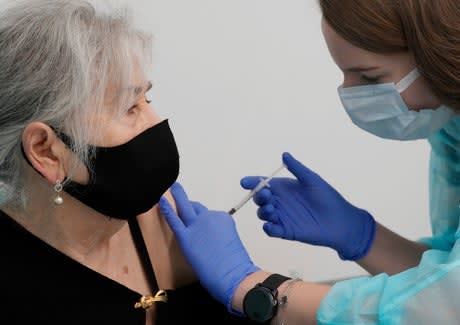
What does ‘nocebo effect’ mean - and how does it relate to placebos?
A “placebo effect’’ occurs when a medical patient is given a treatment that has no pharmacological therapeutic benefit as part of a trial programme, such as a saline injection or a sugar pill, but which nevertheless produces an improvement in their health.
Its mirror-image is the “nocebo effect”, which sees the patient suffer adverse side effects in the same circumstances despite the treatments posing no actual threat to their wellbeing.
The latter phenomenon is making headlines because a new study has suggested that it could explain nearly two-thirds of negative impacts reported in response to Covid-19 vaccines.
Researchers from the Beth Israel Deaconess Medical Center in Boston, Massachusetts, assessed data from 12 clinical trials of coronavirus vaccines and compared the rate of adverse events reported by participants who had received the jab to the rate of side effects experienced by those who had been given only a placebo injection containing no vaccine serum.
According to the study, which was published in the journal JAMA Network Open, adverse effects were reported by 22,578 placebo recipients (nocebo responses) and by 22,802 people who really did get a vaccine dose.
After the (bogus) first jab was administered, 35 per cent of the placebo recipients complained of symptoms like fever while 19.6 per cent reported headaches and 16.7 per cent fatigue. Another 16 per cent reported more localised symptoms, including pain at the site of injection, soreness or swelling.
Meanwhile, 46 per cent of those who did receive the vaccine likewise experienced at least one systemic adverse event after their first jab while two-thirds reported at least one more localised symptom.
After the second dose, the analysis found that side effects among the placebo group fell to 32 per cent reporting systemic events and 12 per cent reporting local effects, while those really given the vaccine reported a greater number of side effects, with 61 per cent experiencing adverse systemic events and 73 per cent local events.
The researchers said they suspect the higher rate of side effects in the vaccine group the first time around may have led participants to anticipate more in the second instance but insisted this was only a hypothesis.
Overall, the study suggests that the nocebo effect could account for over three-quarters of all adverse events reported after a first jab by the vaccine group and nearly a quarter of all local effects –and nearly half of side effects complained of after a second dose.
“Nonspecific symptoms like headache and fatigue – which we have shown to be particularly nocebo sensitive – are listed among the most common adverse reactions following Covid-19 vaccination in many information leaflets,” the study’s senior author Ted J Kaptchuk, professor of medicine at Harvard Medical School, said in a statement.
“Evidence suggests that this sort of information may cause people to misattribute common daily background sensations as arising from the vaccine or cause anxiety and worry that make people hyper-alert to bodily feelings about adverse events.
“Our findings lead us to suggest that informing the public about the potential for nocebo responses could help reduce worries about Covid-19 vaccination, which might decrease vaccination hesitancy,” Dr Kaptchuk concluded.